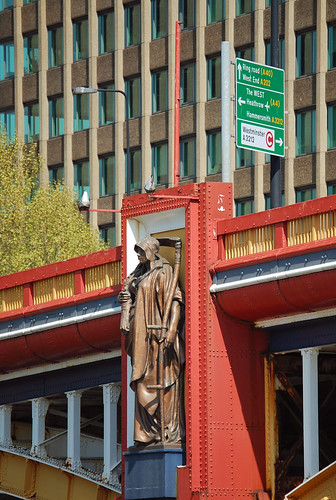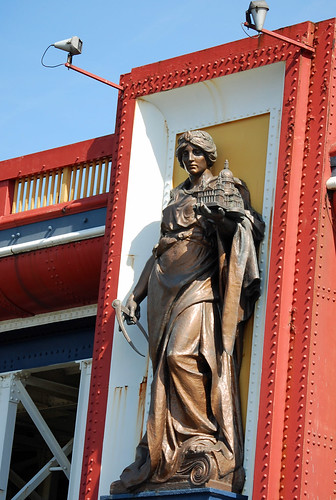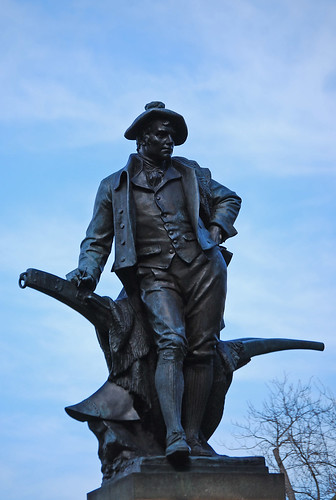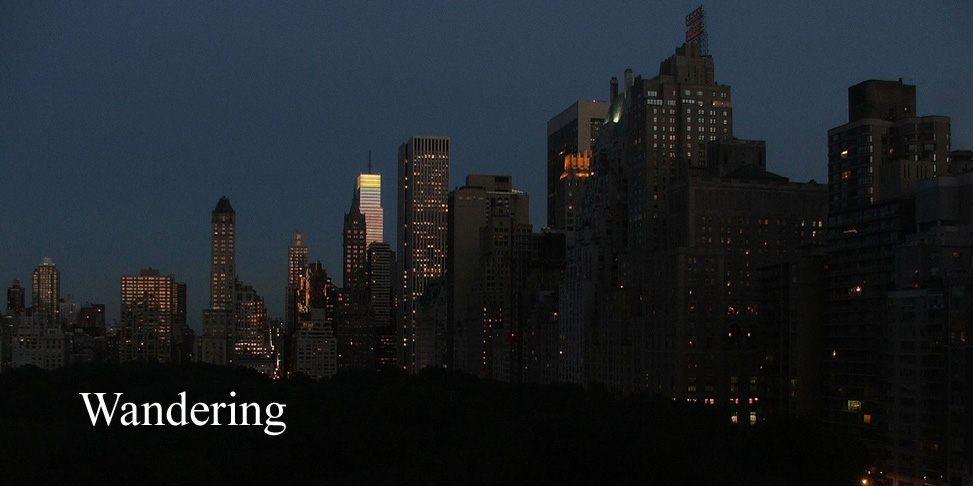
There are statues of Robert Burns all over the world, and we have one in The Domain. The sculpture is by Frederick Pomeroy (1856 - 1924), who also contributed four of the eight statues on Vauxhall Bridge in London.

Agriculture

Architecture
The Burns statue dates from 1905; and adopts the legend of the heaven taught ploughman, who leans on a large plough holding a small pen, or perhaps the stylus he used to inscribe verse on window panes.

He seems over dressed for ploughing and wears a Tam o' Shanter (rather than his farmer's hat) in tribute to his eponymous hero.
When Burns went to Edinburgh for the first time in 1786 , he adopted the persona of a rustic bard, attracting comment by wearing his farmer's boots everywhere. Pomeroy missed an opportunity by giving this statue less robust footware.
Australia's own bard, Henry Lawson, saw the statue unveiled and published this in The Bulletin:
Grown tired of mourning for my sins—
And brooding over merits—
The other night with aching heart
I went amongst the spirits;
And I met one that I knew well:
“O Scotty’s Ghost! is that you?
And did you see the fearsome crowd
At Bobbie Burns’s statue?
“They hurried up in hansom cabs,
Tall-hatted and frock-coated;
They trained it in from all the towns,
The weird and hairy-throated;
They spoke in some outlandish tongue,
They cut some comic capers,
And ilka man was wild to get
His name in all the papers.
“They showed no sign of intellect,
Those frauds who rushed before us;
They knew one verse of ‘Auld Lang Syne’—
The first one and the chorus.
They clacked the clack o’ Scotlan’’s Bard,
They glibly talked of ‘Rabby’;
But what if he had come to them
Without a groat and shabby?
“They drank and wept for Rabbie’s sake,
They stood and brayed like asses
(The living bard’s a drunken rake—
The dead one loved the lasses);
If Bobbie Burns were here, they’d sit
As still as any mouse is;
If Bobbie Bums should come their way,
They’d turn him out their houses.
“O weep for bonny Scotland’s Bard!
And praise the Scottish nation,
Who made him spy and let him die
Heart-broken in privation:
Exciseman, so that he might live
Through northern winters’ rigours—
Just as in southern lands they give
The hard-up rhymer figures.
“We need some songs of stinging fun
To wake the States and light ’em;
I wish a man like Robert Burns
Were here to-day to write ’em!
But still the mockery shall survive
Till Day o’ Judgement crashes—
The men we scorn when we’re alive
With praise insult our ashes.”
And Scotty’s Ghost said: “Never mind
The fleas that you inherit;
The living bard can flick ’em off—
They cannot hurt his spirit.
The crawlers round the poet’s name
Shall crawl through all the ages;
His work’s the living thing, and they
Are fly-dirt on the pages.”
If, like Lawson, you identify with the writer and the poetry, it's easy to dismiss the statues and the myth out of hand. But these emerged from the poetry, or some of it, as well and are interesting in themselves.
Lawson anticipated the thoughts of Scotland's 20th century bard Hugh MacDairmid (Christopher Murray Grieve 1892-1978) who wrote of:
"The world wide attention devoted today ( at least once a year) to the mere man and his uninteresting love affairs and the ramifications of the genealogies of his acquaintances and the poor bric-a-brac of his lars and penates and the witless lucubrations of the hordes of bourgeois "orators" who annually befoul his memory by the expression of sentiments utterly antipathetic to that stupendous element in him which ensures his immortality."
"The Burns Cult" reprinted in At the sign of the Thistle at 168
Compare Lawson (above):
We need some songs of stinging fun
To wake the States and light ’em;
I wish a man like Robert Burns
Were here to-day to write ’em!
But still the mockery shall survive
Till Day o’ Judgement crashes—
The men we scorn when we’re alive
With praise insult our ashes.”
And MacDairmid (A Drunk Man Looks at The Thistle):
Rabbie, wad'st thou wert here - the warld hath need,
And Scotland mair sae, o' the likes o' thee!
The whisky that aince moved your lyre's become
A laxative for a' loquacity.
I found the details of the statue and the poem by Lawson in an excellent guide book to the Royal Botanic Gardens, The Domain, and Centennial Park Sydney: Poetry of Place by Edwin Wilson.
For a further page on the Burns statue click here





2 comments:
No more than 200 metres north of that statue of Burns, there is also a statue of
Henry Lawson
Thank you for the comment Henry, and the link to your statue. Wilson's Poetry of Place 145 -147 has more about the statue including Wilson's own poem about it. We learn that Henry was unveiled by Sir Philip Game in 1931, though, appropriately, Henry's brother in law, Jack Lang, was not present.
Post a Comment